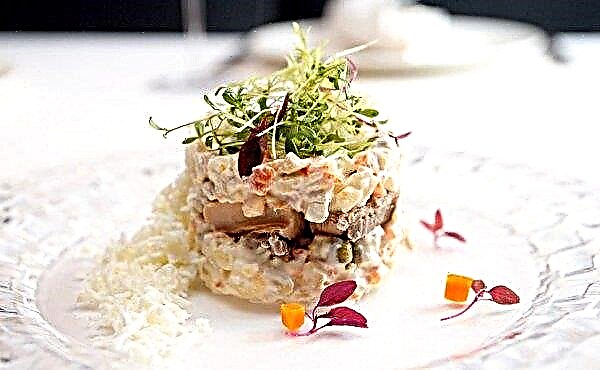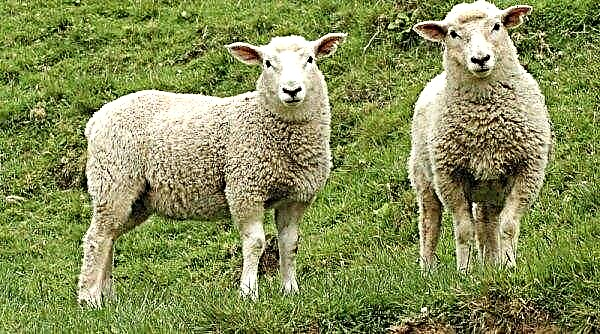An artificial pond is not only a decorative, but also a practical solution for a personal garden. If the cottage contains geese or ducks, the presence of a reservoir can positively affect their general condition. From this article you will learn what materials and how to make a bird pool with your own hands.
Determining the location and size of the pond
It is best to place an artificial pond as close to the bird house as possible, where birds live - birds will not have to move away from their usual habitat for water procedures. To facilitate the construction of the structure, the soil should be as permeable as possible, loose, without petrified rocks.
Care must be taken to ensure that water from the surface of the pond does not evaporate too quickly. To do this, select the most shaded area of your summer cottage. The deepening of natural origin will greatly facilitate the work of digging a pit for a pond.
Necessary tools and from which you can make a reservoir
To build a pond, first of all, you need a shovel. It is with the help of it that the initial shape and dimensions of the future reservoir will be formed. If the construction is supposed to be built from scratch, a spatula will be needed, and the materials will be added: bricks, putty for masonry, cement and primer.
Important! In order not to often have to remove dirt from the adjacent area, which is formed after the adoption of "water procedures" by poultry, it is advisable to place the pond as far as possible from residential buildings.
If desired, a waterproof paint, brush or paint roller is required to obtain a more decorative appearance. To simplify the creation of the pool, you can use one of the best "blanks" - an old bathroom. Its internal space will act as the bottom and walls of the pool, which will reliably retain water within the provided volume. If you don’t have old plumbing equipment at hand, you can use plastic, plastic film, or even a tractor tire.
How to do it yourself
The most difficult option, but also the most attractive one, is to make a pond without blanks, using only building materials. The appearance of such a lake will be limited only by your imagination.
Did you know? Geese have a semblance of their alphabet. They communicate with each other, making about 10 different sounds, each of which characterizes the current situation.
To build a technical pond, follow the algorithm:
- It is necessary to dig a recess under the future reservoir, trench and pit for discharge.
- Using brickwork, create a drainage system at the bottom.
- Fit a drain pipe into the trench.
- Form the base of the artificial lake with cement and wait for it to dry completely.
- Coat the dried layer with a primer.

If you do not plan to equip a large body of water, it is enough to complete only the first two points and fix plastic material or a special plastic film at the bottom.
There are easier ways. For example, to create a pond, it is enough:
- Measure the dimensions of the old bath.
- Dig a hole based on the size obtained (with "allowances").
- Lower the bath into the recess and pour water into the tank.

The simplest but least attractive way to equip an artificial pond with your own hands is to use tractor ramps. It is enough to simply cut them into two equal parts (half), and pour water into the resulting containers.
What you need to do so that the pond does not stink
Artificial ponds, beloved by ducks and geese, can stink too quickly. This is due to the natural process of decomposition of organics in water. To avoid such a problem, the pool must be equipped with a pump-aerator.
This device will establish an air exchange between the artificial lake and the natural environment. In the case when the pond was built using polyethylene, rubber slopes or a bath, it is enough to periodically change the water. Very small reservoirs of old household plumbing items should be drained daily, larger ones every week.Important! It is easier for owners of large reservoirs, the design of which provides for forced water exchange, to refresh the water and carry out chemical treatment. Therefore, the presence of a drain pit is often necessary for long-term maintenance of the pond.

If the unpleasant odor remains even after changing the water, special chlorine-containing products must be added to the liquid. However, then the birds will not “visit” the body of water until the pungent odor of the chemical has completely dissipated.
Pros and cons of pond water
- The benefits of having a pond in a summer cottage are obvious. The main ones include:
- maintaining the health of birds;
- providing natural habitats for birds;
- stimulation of weight gain by geese, ducks.

Along with these advantages, the owner of an artificial pond in the country will face certain difficulties. The pond must be constantly monitored: the water in the reservoir can evaporate or become polluted too quickly, and birds can spread dirt through the compound. In addition, with a small number of ducks or geese, an artificial pool may lose its relevance.
Did you know? Geese become attached to their habitat and protect it fearlessly. Most often, the aggression of these birds is manifested during the invasion of their territory during the breeding season.
This is due to the fact that a few ordinary birds have a normal drinker without the possibility of water procedures. The problem of finding domesticated birds of a pond appears only when their flock has 10 or more heads. In this case, the waterfowl begins to run away from the summer cottage in search of a lake, river, etc.

As a result, an artificial reservoir is a necessary construction in areas whose owners are engaged in the maintenance and breeding of a large number of geese or ducks. In the presence of a pond, feathered individuals are less likely to run away from the site, gain body weight faster, and their general health improves. In addition, a pond can be constructed with your own hands using improvised materials without any special difficulties and financial costs.












